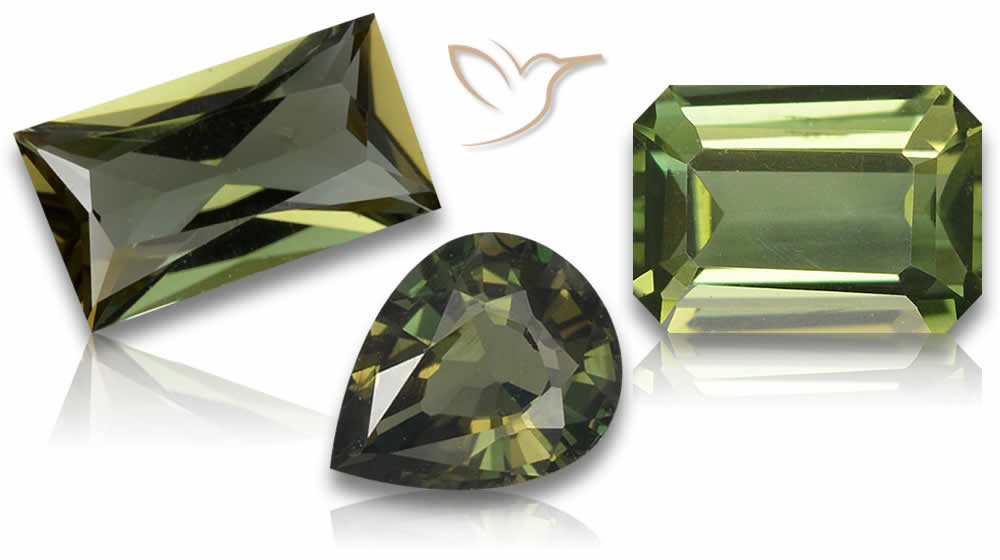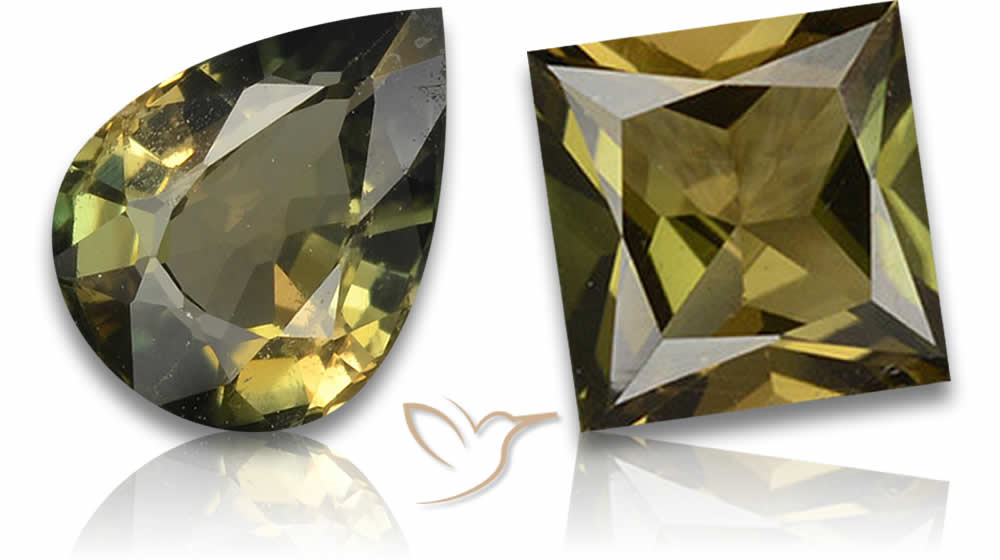Kornerupine Gemstone: Discover Its Beauty

Kornerupine is a rare and intriguing gemstone valued for its diverse colors, which span from green and yellow to blue and brown. With its notable brilliance and solid hardness, this gemstone makes an appealing option for jewelers and collectors alike. First found in Greenland during the 19th century, it's sometimes mistaken for more familiar stones like tourmaline or sapphire because of its similar look.
In this piece, we'll explore the intriguing background, characteristics, and applications of Kornerupine, revealing why it continues to be a lesser-known gem in the gemstone realm. Hey, if you're curious, why not check out some real examples?
Feel free to browse our selection of Kornerupine gemstones for sale.
Key Takeaways
- Kornerupine stands out as a rare and distinctive gemstone among other precious varieties.
- It carries a deep history and cultural importance across different eras.
- This gem is admired for its striking colors and notable hardness.
- Its applications range from jewelry to ornamental items, and it may even support emotional stability and creative thinking.
- If you're considering an investment, we'll share tips on assessing its quality and worth.
The History of Kornerupine Gemstone
Let's step back in time to trace the origins of the Kornerupine gemstone. This uncommon stone was initially uncovered in Greenland in 1887 by Danish mineralogist Andreas Nikolaus Kornerup, after whom it was named.
Kornerupine appears in limited spots globally. It was first documented from Fiskernaes in southwest Greenland. Additional significant sources include Australia, Burma (Myanmar), Canada (Quebec), Kenya, Madagascar, South Africa, Sri Lanka, Tanzania, and Norway.
"The Kornerupine gemstone holds strong cultural meaning in various nations and is prized for its notable beauty and special traits."
Lately, Kornerupine has grown in appeal thanks to its unique green and brown tones, plus its strong rating on the Mohs hardness scale, which suits it well for jewelry and decor.
| Country | Location | Color(s) | Cultural significance |
|---|---|---|---|
| Greenland | Kangerlussuaq | Green, brown, yellow | Traditional jewelry and healing purposes |
| Australia | New South Wales | Green, brown | Used in unique jewelry designs |
| Madagascar | Ampasindrano | Green, blue | Believed to enhance intuition and encourage self-expression |
Even now, Kornerupine is treasured as a gem for anyone wanting a genuinely rare and special piece in their assortment.
Unique Qualities of Kornerupine Gemstone
Kornerupine boasts a remarkable beauty that distinguishes it from other gems. Here's a look at some of its standout features:
| Quality | Description |
|---|---|
| Color | Kornerupine displays colors from green to brown, offering flexibility for jewelry and decor. |
| Dichroism | It shows dichroism, meaning varied colors from different angles, which boosts its visual appeal. |
| Hardness | With a hardness of 6.5 to 7 on the Mohs scale, it's tough enough for everyday use. |
| Transparency | Ranging from transparent to opaque, it opens up creative design options leveraging its colors and clarity. |
In summary, Kornerupine combines impressive traits that make it perfect for jewelry, decor, or collecting.
The Versatile Uses of Kornerupine
For centuries, Kornerupine has served multiple roles due to its beauty and distinct properties. Check out some of its varied applications:
| Use | Description |
|---|---|
| Jewelry | Popular in jewelry for its lively color and durability, often faceted to boost shine and set in metals for stunning pieces. |
| Decorative Pieces | Extends to decor, like in vases, lamps, or art, or as small sculptures adding elegance to spaces. |
| Meditation Aid | Used in meditation for its supposed calming effects, helping reduce stress and foster mindfulness. |
| Healing Properties | Thought to aid with digestion, breathing, muscles, bones, joints, and hormonal balance. |
With such broad uses, it's clear why Kornerupine has been valued across cultures. Whether for its looks, adaptability, or believed benefits, it never fails to impress.
The Benefits of Kornerupine
Disclaimer: The healing and spiritual properties discussed here stem from traditional beliefs and anecdotal reports. They lack scientific backing and should not substitute for professional medical advice. Always consult a healthcare expert for health issues.
We see Kornerupine as more than just eye-catching - it might positively influence your well-being too. Here are some possible advantages of adding this gem to your routine:
Emotional Balance
Crystal enthusiasts suggest Kornerupine could foster emotional stability and ease anxiety or stress. Its soothing vibe might help realign feelings, letting you approach hurdles with sharper focus.
Enhanced Creativity
It's also linked to sparking creativity. If you're an artist hunting for ideas or a writer battling a block, Kornerupine's traits might fuel your imagination.

Physical Healing
Believed to bolster the immune system and restore bodily balance, it may assist digestion, metabolism, energy, and general health.
Spiritual Growth
Kornerupine's energy could support spiritual development, heightening awareness and activating the third eye for better intuition.
Positive Energy
Bringing Kornerupine into your life might draw positive vibes and fortune, whether carried or worn, uplifting your aura.
Investing in Kornerupine Gemstone
Considering a rare gem investment? Kornerupine is a solid pick. Assess quality by examining color, clarity, and cut - top stones show vibrant green or brown shades, high clarity, and balanced cuts.
Value-wise, it's reasonably priced versus other gems, though it fluctuates with size, quality, and market demand.
Remember its durability for daily jewelry wear and its bold color for standout collections when purchasing.
Adorning Yourself with Kornerupine Gemstone Jewelry
Jewelry is all about expressing yourself creatively. Wearing Kornerupine jewelry brings a refined, elegant flair to any look. Its colors - from deep green to brownish-yellow or blueish-grey - can brighten or blend with outfits.
Options abound in Kornerupine jewelry, from subtle studs to elaborate pendants, fitting classic or contemporary tastes.
To keep it shining, clean with warm soapy water and a soft brush, steering clear of harsh chemicals or extreme heat. Proper care means your pieces stay treasured for years.
"Kornerupine jewelry brings a refined, elegant flair to any look."
Conclusion
Given its deep history, special qualities, and potential perks, Kornerupine shines as a genuine find in gemstones. Investing in it or wearing its jewelry can infuse your life with beauty and grace.
At Gemselect, we value top-tier gems and offer Kornerupine selections. Our team provides great service to help you pick the ideal stone.
Thanks for reading about Kornerupine. We hope it sparks your interest in the fascinating gemstone world.
You can find out even more about Kornerupine in this article here.
Frequently Asked Questions
What is the meaning of the Kornerupine?
The Kornerupine is believed to symbolize balance, harmony, and personal growth.
What are the properties of the Kornerupine?
Kornerupine is known for its stunning colors, including green, brown, and yellow. It is also prized for its excellent transparency and remarkable hardness.
How can the Kornerupine gemstone benefit me?
Wearing or incorporating the Kornerupine gemstone into your life is believed to promote emotional balance, enhance creativity, and provide a sense of calm and clarity.
What are the different uses of the Kornerupine gemstone?
The Kornerupine gemstone can be used to create exquisite jewelry pieces, such as rings, earrings, necklaces, and bracelets. It is also used in decorative items and as a collector's stone.
Can I buy Kornerupine gemstone?
Yes, you can purchase Kornerupine from our online store.
How can I determine the quality and value of a Kornerupine gemstone?
The quality of a Kornerupine gemstone is determined by factors such as color, transparency, and clarity. The value is influenced by these factors as well as rarity and size.
Is Kornerupine treated?
Kornerupine is not known to be treated or enhanced in any way.

